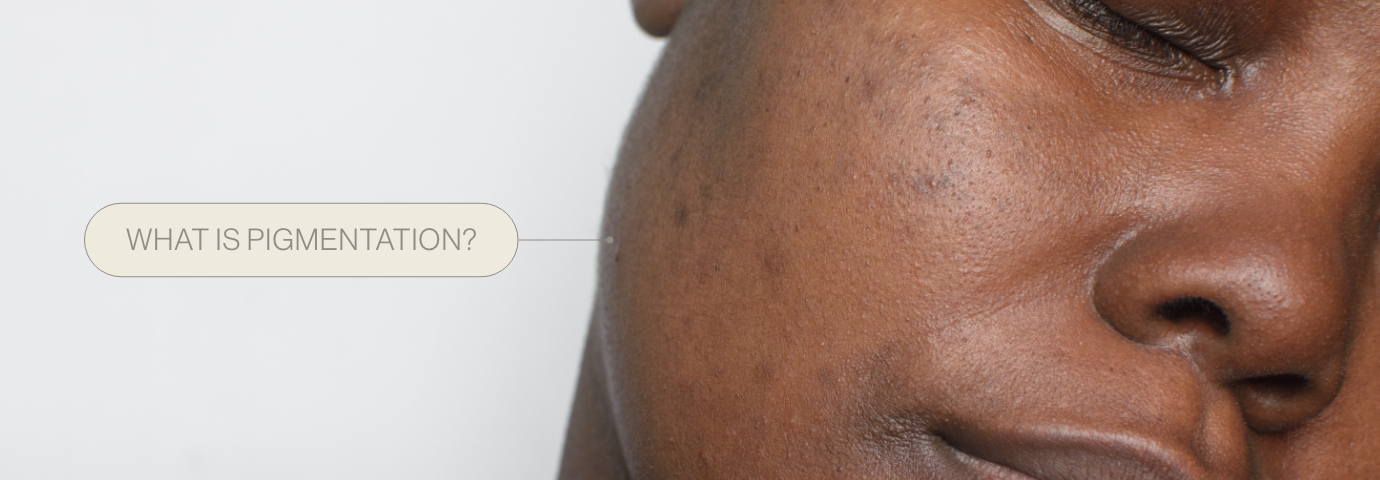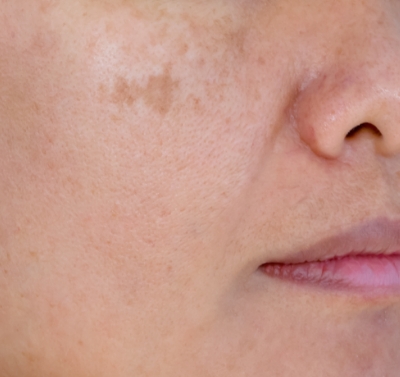What is pigmentation?

Pigmentation is a complex process that determines the colour of our skin, hair, and eyes. It is controlled by specialised cells called melanocytes, which are found in the basal layer of the skin's epidermis.
These cells produce a pigment called melanin, which is responsible for giving our skin its unique shade. So how does hyperpigmentation occur? Keep reading to discover what the main causes of this challenging skin concern are.
What causes hyperpigmentation?
The skin concern pigmentation arises when this complex process becomes unbalanced and creates hyperpigmentation. In essence, “hyper” means more, and “pigment” means colour. While melanin production is normal for our unique skin, eye and hair colouring, the issues start to occur when this complex process becomes unbalanced and creates hyperpigmentation.
In essence, “hyper” means more, and “pigment” means colour. When melanocytes (specialised cells that produce melanin) become damaged they can become overactive and start to produce excessive melanin causing patchy pigmentation. You’ll often see hyperpigmentation described as age spots, sunspots, brown spots, uneven skin tone and discolouration.
There are a few known factors that can result in the overproduction of melanin, including:
Sun exposure
When our skin is exposed to UV rays and blue light, it triggers melanocytes to produce melanin which acts as a natural shield against UV radiation, absorbing and dispersing the rays to protect our skin cells from damage. However, excessive sun damage can disrupt the normal production and distribution of melanin in certain areas, leading to patches of darker skin [2].
Oxidative stress
Oxidative stress is an imbalance between free radicals and antioxidants in your body, which can be caused by lifestyle factors such as smoking, poor diet, and too much sun exposure.
Free radicals are known as oxygen-derived molecules with unpaired electrons – this makes them highly reactive and susceptible to damage [3]. They can stimulative the activation of melanocytes [4], leading to increased melanin production. Melanocytes respond to oxidative stress by producing more melanin as a defence mechanism. When melanocytes are overstimulated, excessive melanin production can result in hyperpigmentation, such as sunspots, brown spots, and age spots.
Hormones
Any condition where hormone balance is dysregulated such as pregnancy or starting the contraceptive pill may cause hyperpigmentation. During pregnancy, this is known as “the pregnancy mask”.
Post Inflammatory Pigmentation (PIH)
This is when the skin experiences trauma from squeezing or picking spots, it triggers an inflammatory response that can disrupt the normal functioning of melanocytes. This disruption can lead to abnormal melanin production and deposition, resulting in skin discolouration. PIH can take a significant amount of time to naturally fade.
Darker skin types are normally more susceptible to this form of hyperpigmentation[5].

Age and Genetics
Age and genetics also contribute to hyperpigmentation. Hyperpigmentation is a common symptom accompanying ageing skin [6].
As we grow older, our skin undergoes both chronological ageing, and environmental ageing.
Chronological ageing is dependent on the passage of time, whereas environmental ageing caused by external factors such as sun exposure and air pollution. With age, our cell’s function and integrity become more compromised, which can result in abnormalities in melanin production [7].
To support and manage this skin concern, our researchers recommend taking Skin Even IQ, the smart supplement system that targets stubborn pigmentation and discolouration, revealing a radiant and unified complexion.

Each daily pod features 23 melanin regulating ingredients in 5 capsules including:
Skin Bright: key ingredients including niacin, copper* and vitamin C which regulates the body’s melanin production.
Skin Blue Filter: cell-protecting antioxidants that protect your skin from blue light by up to 60%***
Skin CoQ10: skin energiser combined with French maritime pine bark extract.
Skin Vit C: zinc, vitamin C and acerola berry to brighten your complexion.
Skin Antioxidant: Synergy of antioxidants to protect your skin against external aggressors.
It’s also essential to wear an SPF daily to protect your skin from blue light and UV rays to ensure you are achieving 100% skincare by protecting the skin from the inside and out.
*Copper contributes to the normal skin pigmentation
Sources:
[1] Skin Pigmentation, Sun Exposure, and Vitamin D, Carolina Bonilla, BMC Public Health, 2014
[2] The Protective Role of Melanin Against UV Damage, Michaela Brenner, National Library of Medicine, 2007
[3]The Science of Dark Spots, The International Dermal Institute, March 22, 2021
[4]Melanocytes as Instigators and Victims of Oxidative Stress, L. Denat, National Library of Medicine, 2014
[5]The Science of Dark Spots, The International Dermal Institute, March 22, 2021
[6] Skin Pigmentation Abnormalities and their possible relationship with ageing, National Library of Medicine, Ai-Young Lee, April 2021
[7] Skin Pigmentation Abnormalities and their possible relationship with ageing, National Library of Medicine, Ai-Young Lee, April 2021
